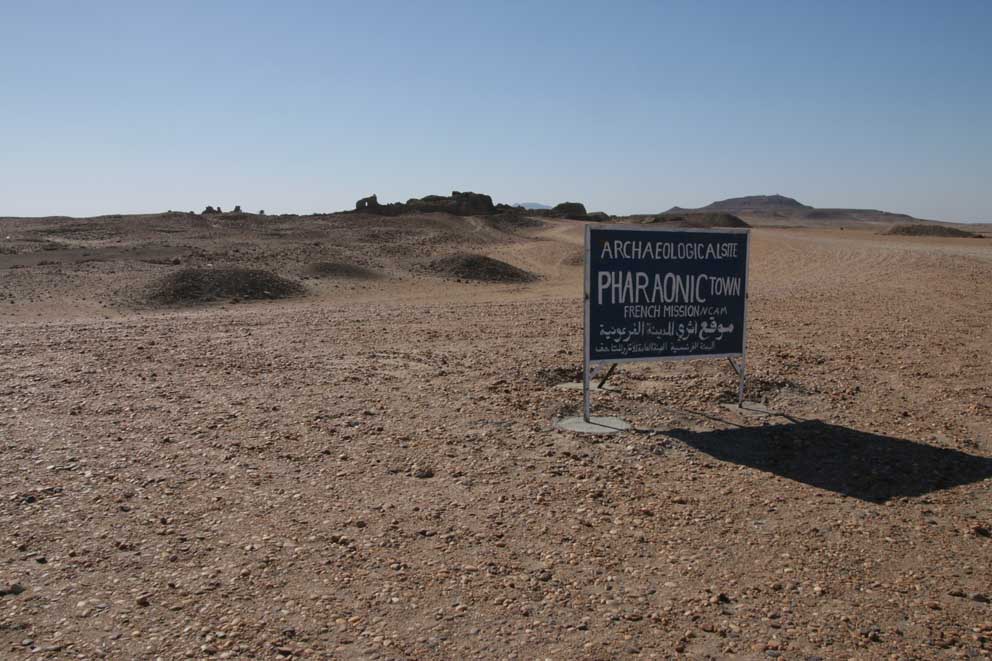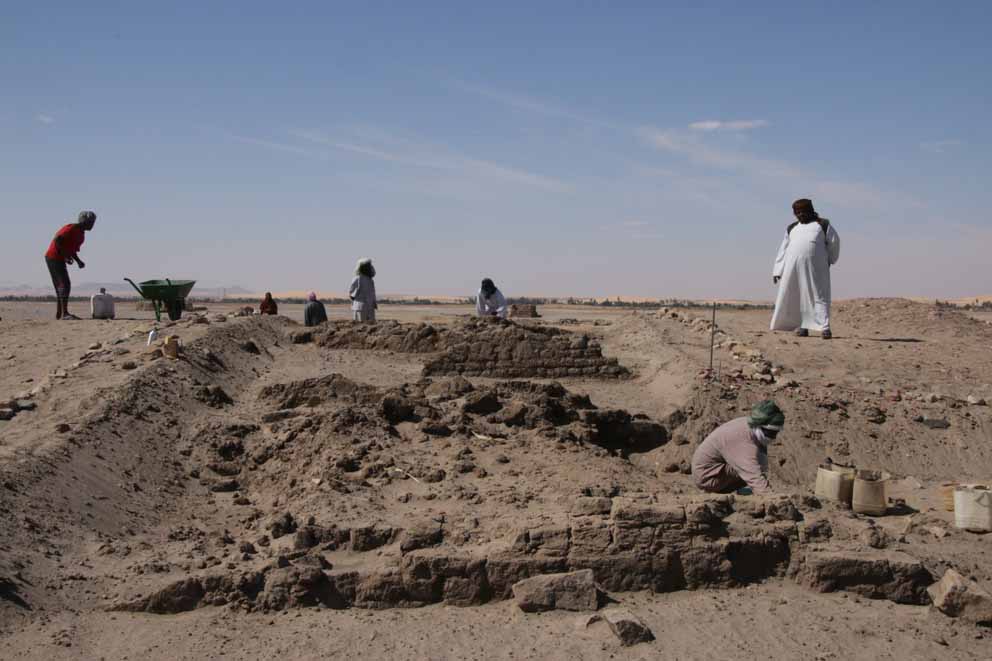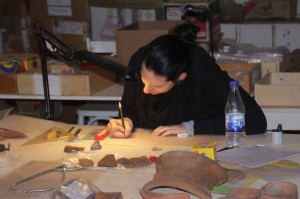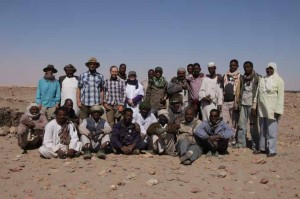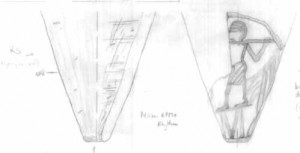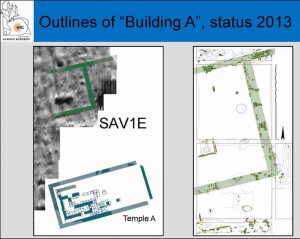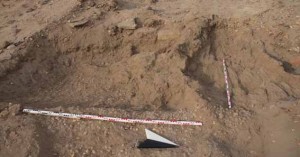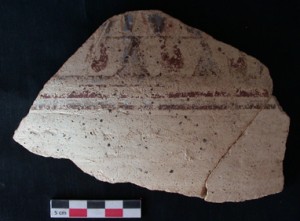The aim of the geoarchaeological fieldwork within the framework of AcrossBorders was to expand our knowledge about the existing rock types, their relationships, Quaternary sediments, geomorphological evolution and estimations about possible Nile erosion processes at the site of the Pharaonic settlement. The scarcity of vegetation, presence of riverfront exposures as well as excellent outcrops provided by excavated graves offer great geoarchaeological working conditions.
Sai Island is situated between the 2nd and 3rd Nile cataracts, which are a result of a large scale east-west trending tectonic uplift zone, which forces the Nile to incise into uplifted Neoproterozoic crystalline basement and its sedimentary cover (Thurmond et al. 2004). Consequently, Sai Island comprises medium-grade metamorphic Precambrian rocks (amphibolite, dolomite, quartzite, biotite gneiss, calcite marble) in the west and southeast, dipping around 30° towards the Northwest. These rocks are commonly cross-cut by large quartz-veins. In the central and northern part of the island these meta-volcano-sedimentary rocks are overlain by subhorizontal Nubian Sandstone, mainly consisting of medium- to coarse-grained fluvial quartz sandstone, conglomerate, rare siltstone and occasional silicified wood.
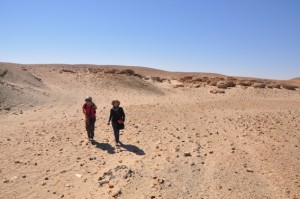
Yellowish Nubian Sandstone overlying dark amphibolite in the southeast part of Sai Island
Almost all of these rocks are covered by thin layers of comparably much younger Nile sediments (in some places with Palaeolithic artefacts) and only the Nubian Sandstone of Jebel Adu raises as an Inselberg from the flat terraces surfaces (van Peer et al. 2003, Anonymous 2005).

Example of small basement outcrop in the more fertile West of the island
The pre-Holocene Nile sediments mainly comprise gravely channel deposits and fine-grained floodplain sediments. The sub-rounded to rounded gravel of the pre-Holocene Nile terraces are strongly dominated by quartz clasts, followed by chert and beautiful agate and virtually free of carbonate clasts, while the fine-grained floodplain sediments commonly show soil formation processes and related calcrete (Lewis et al. 2011).
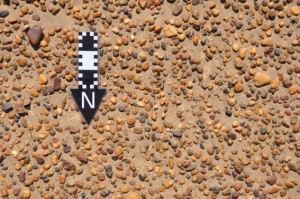
Photo showing typical composition and grain-size of gravelly terrace surfaces
The rock types occurring at the site of the Pharaonic settlement in general reflect the geological reality of the island and most of them are locally available. By far the most common rock types are quartz sandstone and amphibolite, while vein quartz, calcrete, biotite gneiss, calcite marble are comparable rare. Rock types which probably have been brought to the island include granite, diorite, gabbro and gypsum.
References:
Anonymous, Geological map of Sudan. 1 : 3,500,000, Geological Research Authority of the Sudan, Khartoum, 2005.
J. Lewis, J. Smith, & E. Garcea, Paleoenvironmental implications of the isotope geochemistry and granulometry of Quaternary alluvial sediments and paleosols from Sai Island, Sudan. GSA Annual Meeting, 9-12 October 2011, Minneapolis, abstract, 2011, 95-19.
A.K. Thurmond, R.J. Stern, M.G. Abdelsalam, K.C. Nielsen, M.M. Abdeen & E. Hinz, The Nubian Swell. Journal of African Earth Sciences, 39, 2004, 401-407.
P. Van Peer, R. Fullagar, S. Stokes, R.M. Bailey, J. Moeyersons, F. Steenhoudt, A. Geerts, T. Vanderbeken, M. de Dapper & F. Geus, The Early to Middle Stone Age Transition and the Emergence of Modern Human Behaviour at site 8-B-11, Sai Island, Sudan. Journal of Human Evolution, 45, 2003, 187-193.
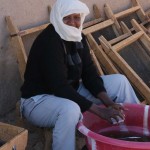 he New Kingdom town of Sai Island; and it was a very fruitful, productive and pleasant season! Large amounts of material were unearthed and all working areas provided interesting results. We are currently busy packing the pottery collected as representative samples, washing the last diagnostic sherds and making final drawings of important pieces.
he New Kingdom town of Sai Island; and it was a very fruitful, productive and pleasant season! Large amounts of material were unearthed and all working areas provided interesting results. We are currently busy packing the pottery collected as representative samples, washing the last diagnostic sherds and making final drawings of important pieces.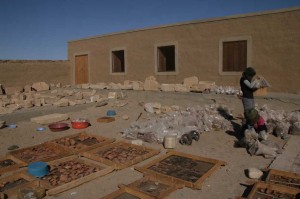 The database of small finds from both SAV1 West and SAV1 East now comprises 1732 pieces – and several large boxes of grind stones and pounders are still awaiting registration; one of the first tasks for 2015! The majorities of the finds from the 2014 season are worked stones and
The database of small finds from both SAV1 West and SAV1 East now comprises 1732 pieces – and several large boxes of grind stones and pounders are still awaiting registration; one of the first tasks for 2015! The majorities of the finds from the 2014 season are worked stones and  re-used pot sherds, but there are also fayence pieces (Nun bowls, beads, one ring) and a lot of clay objects. Some of the latter are nicely identifiable, e.g. rudimentary female figurines and animal figurines, but others are more obscure. One example is SAV1E 851 – a rather amorphic piece of clay with incised decoration on several sides. Its incised decoration pattern reminds us of the female figurines commonly found in the New Kingdom town of Sai, but its shape is markedly different. Its context does furthermore not allow a precise dating – it is coming from one of the mixed areas in Square 1B, in the northern area of Building A – ranging in date from the 18th Dynasty up to Christian and Ottoman times.
re-used pot sherds, but there are also fayence pieces (Nun bowls, beads, one ring) and a lot of clay objects. Some of the latter are nicely identifiable, e.g. rudimentary female figurines and animal figurines, but others are more obscure. One example is SAV1E 851 – a rather amorphic piece of clay with incised decoration on several sides. Its incised decoration pattern reminds us of the female figurines commonly found in the New Kingdom town of Sai, but its shape is markedly different. Its context does furthermore not allow a precise dating – it is coming from one of the mixed areas in Square 1B, in the northern area of Building A – ranging in date from the 18th Dynasty up to Christian and Ottoman times.
